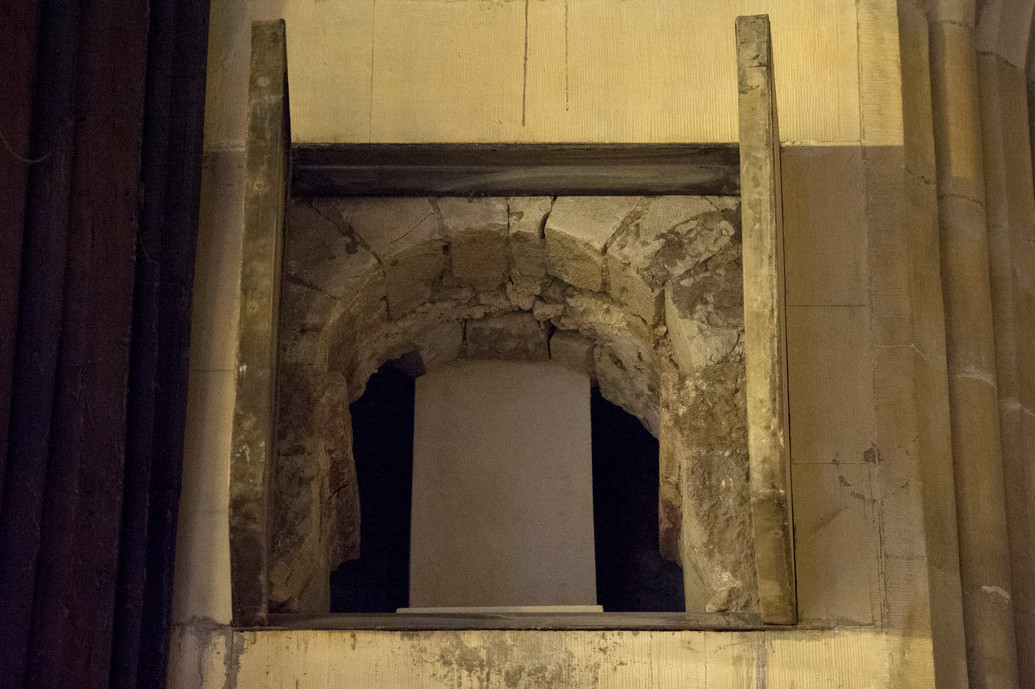This summer we're celebrating 150 years of the Palace of Westminster. But how well do you really know this iconic building? 🤔
Read on to discover all the secret places hidden throughout the Palace...
#Westminster150
©UK Parliament/Jessica Taylor
Read on to discover all the secret places hidden throughout the Palace...
#Westminster150
©UK Parliament/Jessica Taylor

Let's start in Westminster Hall, where we find our first treasure high up in the walls. 🧱
Inside the box is part of the original Norman wall of Westminster Hall, left uncovered when the rest of the walls were restored after the Great Fire of 1834.
©UK Parliament/Mark Duffy
Inside the box is part of the original Norman wall of Westminster Hall, left uncovered when the rest of the walls were restored after the Great Fire of 1834.
©UK Parliament/Mark Duffy

This broom cupboard in the Chapel of St Mary Undercroft is where suffragette Emily Wilding-Davison made history by hiding on the night of the 1911 census.
When found, she gave her address as the @HouseofCommons and was listed as head of household!
©UK Parliament/Jessica Taylor

When found, she gave her address as the @HouseofCommons and was listed as head of household!
©UK Parliament/Jessica Taylor


Our next secret space was hidden for centuries!
Historians recently uncovered a 17th century passageway into the original @HouseofCommons Chamber, which had been panelled over in the 1850s. The bricklayers left their names in graffiti on the walls.
©UK Parliament/Jessica Taylor

Historians recently uncovered a 17th century passageway into the original @HouseofCommons Chamber, which had been panelled over in the 1850s. The bricklayers left their names in graffiti on the walls.
©UK Parliament/Jessica Taylor


Moving into Central Lobby, a place you may have seen before - but probably not from this angle!
This photo was taken from a hidden nook above the chandelier in the Central Tower, which can be seen from the angle in the second photo.
©UK Parliament/Catherine Bebbington

This photo was taken from a hidden nook above the chandelier in the Central Tower, which can be seen from the angle in the second photo.
©UK Parliament/Catherine Bebbington


The @UKHouseofLords has its fair share of hidden gems too.
This octagonal viewpoint at Sovereign's Entrance overlooks the Monarch's arrival at the State Opening of Parliament.
©House of Lords 2019/Roger Harris

This octagonal viewpoint at Sovereign's Entrance overlooks the Monarch's arrival at the State Opening of Parliament.
©House of Lords 2019/Roger Harris


Next, we come to the hidden spaces in the Elizabeth Tower and Big Ben.
Not many people know about the Prison Room of the Elizabeth Tower - and it's not quite as dark as it sounds! The Prison Room sits at the base of the Tower, in what was originally the Serjeant at Arms' Office.
Not many people know about the Prison Room of the Elizabeth Tower - and it's not quite as dark as it sounds! The Prison Room sits at the base of the Tower, in what was originally the Serjeant at Arms' Office.

The Prison Room was designed as a holding cell for anyone who was removed from the Chamber, and was last used in 1880, when an atheist MP spent a night there after refusing to swear a religious oath.
The room is no longer in use. 🗝️
The room is no longer in use. 🗝️
Our final secret place may look strangely familiar - in fact, you've often seen it from the other side!
This is the space behind the Great Clock face. Each dial is made from 324 individual pieces of pot opal glass.
©UK Parliament/Jessica Taylor
This is the space behind the Great Clock face. Each dial is made from 324 individual pieces of pot opal glass.
©UK Parliament/Jessica Taylor

• • •
Missing some Tweet in this thread? You can try to
force a refresh










